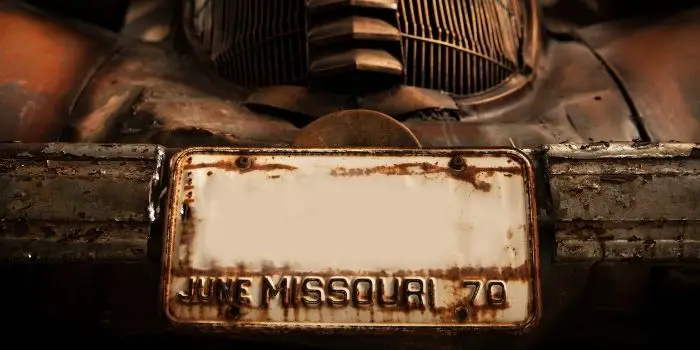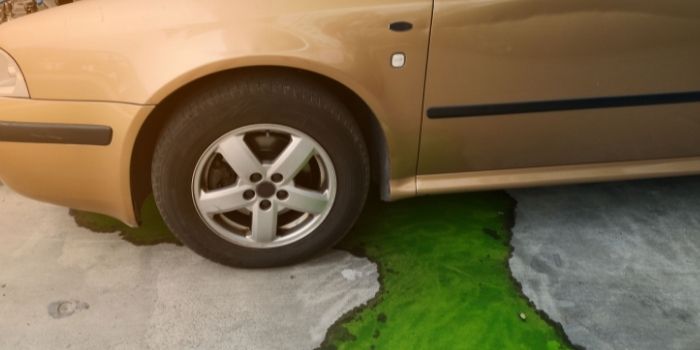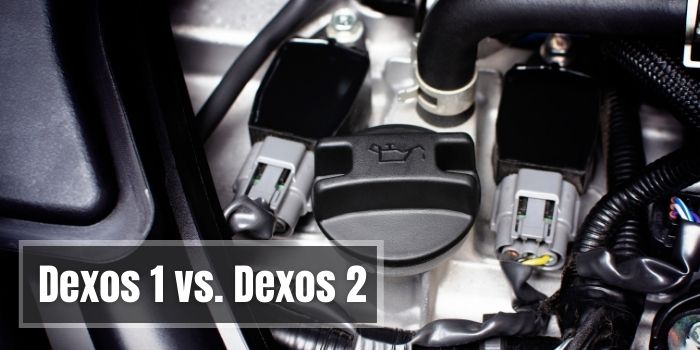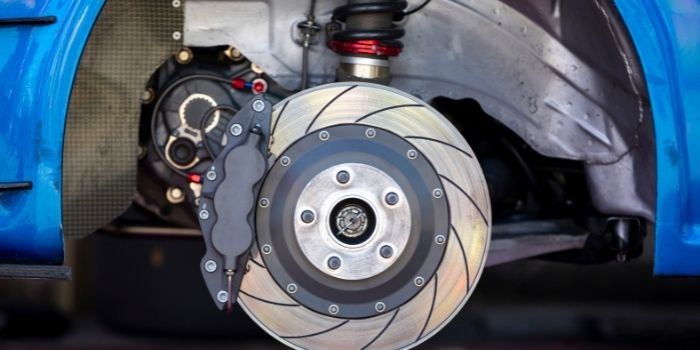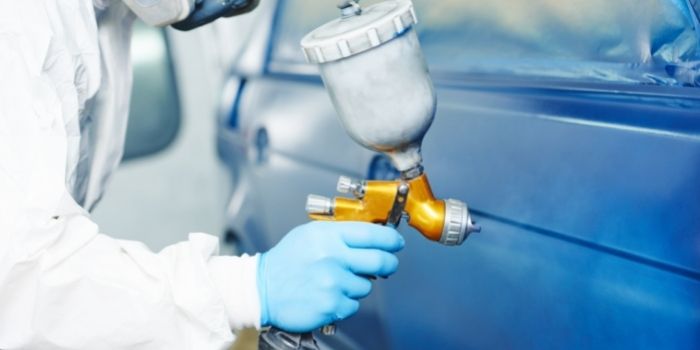
A person who enjoys DIY projects may try their hand at painting their vehicle. However, it is important to know and recognize the most common issues with automotive paint if you choose to undertake this on your own, especially if automotive painting is new to you.
Below, you’ll find some of the most common issues that crop up with paint finishes.
It is recommended that you not only familiarize yourself with the problems listed below but also learn how to properly prepare the surface of the vehicle for the application of the paint in the first place, which can help prevent many of these problems.
These are the possible issues and the most common auto paint defects examples:
Table of Contents
1- Air Trapping
This issue can happen when small bubbles of air come up to the paint’s surface and pop, which leaves behind unattractive craters. This issue often arises due to improper spray gun settings, incorrect distance between the spray gun and the surface, or using unsuitable air pressure.
To prevent this, ensure that the spray gun is properly adjusted, keep the gun at the right distance from the car’s surface, and ensure you are using the right air pressure setting.
You can fix this issue after it occurs using sandpaper with 1200 grit. Afterward, a fine polish should be applied to restore the glossy finish and blend the repaired section seamlessly with the rest of the paint job.
2- Bleeding
Bleeding can occur when there is discoloration that shows up in the topcoat when the solvent in the topcoat dissolves away the pigments in the paint of the old finish. This happens because the solvent in the topcoat dissolves the pigments or dyes in the old paint, causing them to seep into the fresh layer. The result is an uneven and undesirable finish, which can significantly affect the appearance and quality of the paint job.
The bleeding issue in the car paint can be fixed by letting the topcoat cure fully and then spraying a sealer over top of it before applying the color again. After the sealer has dried, the color coat can be reapplied to achieve a smooth, even, and vibrant finish.
3- Blushing
In locations that have high humidity, blushing can occur when the solvent evaporates and lessens the surface temperature below the dew point. This could result in moisture in the paint layer, which can create a cloudy look.
It can be fixed by putting a retarder product in the paint mixture and then coating the area once more. Choose a high-quality retarder product that is made specifically for the conditions where you will be applying the paint to skirt this issue entirely.
Additionally, painting in a controlled environment, such as a temperature-regulated spray booth, can minimize the impact of humidity. Proper surface preparation and application techniques, including maintaining the correct distance and spray gun settings, also play a crucial role in preventing blushing.
4- Cracking
Cracks of different lengths can form in the finish when the undercoat’s film or the topcoat itself is too thick. This may also occur when you paint over a surface that is already cracked or if you apply too much hardener.
To address this issue, it is necessary to strip the affected area of the old paint and start the refinishing process from scratch. This will ensure the proper adhesion of the new layers and help prevent future cracking. Careful attention to the thickness of the undercoat and topcoat, along with the appropriate use of hardener, is also crucial for achieving a smooth and durable finish.
5- Crow’s Feet
Crow’s feet are cracks that can show up in the topcoat and can be caused by several reasons. The most common among these reasons are:
- Applying a film coat that is too thick
- Using a blowgun to dry the primer
- Not allowing enough time for the coats to dry before applying another coat
- Using too much hardener or catalyst in the paint or primer
To remedy the problem, you’ll have to strip away all the paint layers and start the process again. Ensuring proper drying time and the correct application of materials will help prevent crow’s feet from reappearing.
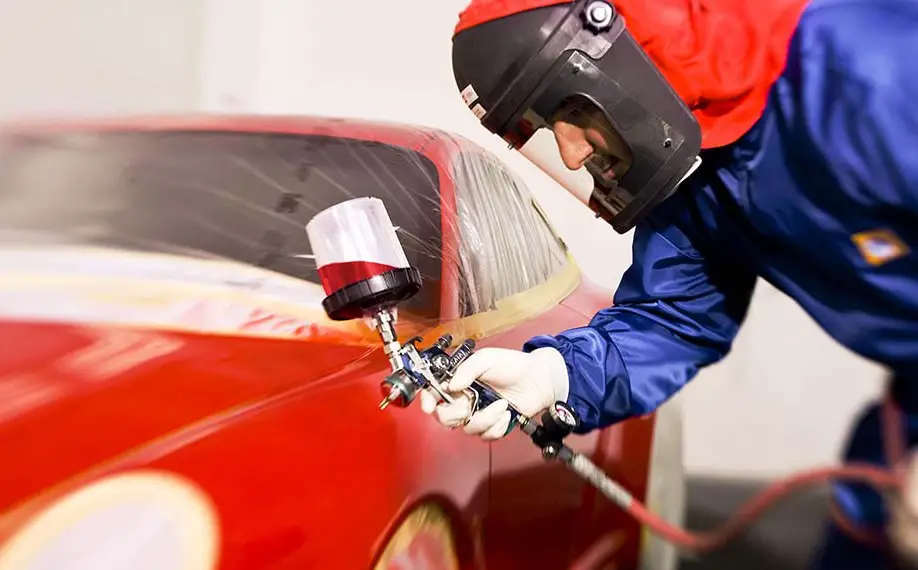
6- Debris in the Paint
It is important to paint in an environment that is as free from dirt and dust as possible.
You need to make sure that the surface of the car has been cleaned thoroughly before starting. Wetting the floor down before spraying the water-based paint and between every coat can also help.
7- Discoloration
Discoloration can occur when you paint over any glazing putty or body filler and will turn out as a yellow stain on the topcoat. This can be caused by using either too little or too much hardener in the filler, priming before you let the filler completely cure, or not mixing the filler enough.
So, to prevent discoloration, ensure that the filler is properly mixed, and fully cured before priming and that the correct amount of hardener is used.
8- Dulling or Hazing
This problem arises when the shine or gloss of the finish dulls before it has had a chance to fully dry. Several factors can contribute to this, but it most commonly occurs when the undercoat is not allowed sufficient drying time.
Ensuring that each layer is properly dried before applying the next is crucial for maintaining a smooth and glossy finish.
9- Feather-Edge Lifting
Commonly known as edge mapping, this issue can occur when the topcoat’s solvent penetrates various parts of the undercoats. It results in a wrinkled look around certain repaired areas.
You can avoid this by making sure the primer you use is two-component, water-based, or otherwise able to properly seal and create a quality barrier.
If this occurs, you’ll need to take off the problem area and then sand and smooth it.
10- Fisheyes
After spraying a coat of paint or primer, you may notice fisheyes cropping up. They look like craters and show up immediately when you are spraying either of these materials onto the car.
It is commonly caused by spraying the paint or primer onto a surface that has been contaminated by grease, wax, oil, or silicone.
The easiest way to prevent this is to ensure you are using a grease and wax remover when getting ready to paint.
11- Grit
Grit is when solid particles of different sizes get stuck in the paint. This can occur when the primer or paint is not properly strained or stirred. This can also occur if you’re using old paint.
You can usually fix this problem by letting it cure properly, sanding it, and then respraying it.
12- Mottling
This refers to a streaked look that shows up in metallic or transparent finishes.
It can be caused by tilting the gun, not using a balanced spray pattern, spraying the clear coat on before the base coat has dried completely or over-thinning.
13- Orange Peeling
Named for its appearance that resembles that of an orange peel, this condition can occur when the pressure used is too low or the paint has not been reduced enough.
If it isn’t too extreme, you might be able to fix it using 1200-grit sandpaper to wet sand it before buffing and respraying it.
Thin your paint following the instructions on the label and make sure you are not applying too much of it.
14- Peeling
When you lose the adhesion between the substrate and the paint, portions of the color can separate from one another.
Avoid this by preparing the surface correctly through sanding, cleaning and applying the right primer.
15- Pinholing
Pinholes can occur when body fillers have air bubbles that get exposed after you sand. This leaves tiny holes behind on the paint’s surface.
It can happen when you mix the hardener and the filler improperly; if you use too much hardener, you raise the chances of creating pinholes.
16- Pimpling
Pimpling refers to areas in the surface that appear weeks or even months after finishing the paint job.
This can occur when moisture gets stuck beneath the surface of the paint.
Prevent this from happening by painting in dry areas or using a dehumidifier if you cannot escape moisture in the air.
17- Sags
Sags are a common problem for DIY paint jobs.
Sags could occur if the paint gun is held too close to the surface, if the paint gun is moved too slowly, or if the paint is doubled-coated.
It can also occur when you are trying to paint on cold days or if the painting area is too cool.
To try to prevent this, keep your paint gun at a perpendicular angle and ensure it’s far enough away from the surface as you move it in even, quick strokes.
18- Sand Scratches
These are marks, lines, or streaks that can show up in the paint film if you don’t sand the body properly.
This can be fixed by allowing it to cure and then sanding over it and finishing it once more.
19- Softness
Softening is when the paint softens a few days after the paint job, making the surface susceptible to fingerprints and water spots.
It can occur when you spray the topcoat or undercoat too heavily or don’t allow enough time for it to dry in between coats.
20- Wrinkling or Lifting
This can occur if a layer of paint shrivels up while putting on a new finish due to solvers in the new finish ruining the solvents in the old finish.
Generally speaking, the best way to prevent issues with automotive painting is to follow what the manufacturer’s instructions state.
Be sure to give each coat plenty of time to cure, avoid taking shortcuts, and use high-quality products to get the best possible results.

Based in Orem (Utah) John Paterson graduated from Utah Valley University and has begun writing in 2009. He has a large wealth of experience in writing articles related to cars, automotive repair, wheels, cleaning/maintenance, and much more. He has also written instructional articles in a similar niche for a few online publications as well. Currently, he works as a mechanic in his personal garage shop where he loves serving his countrymen from his heart.

